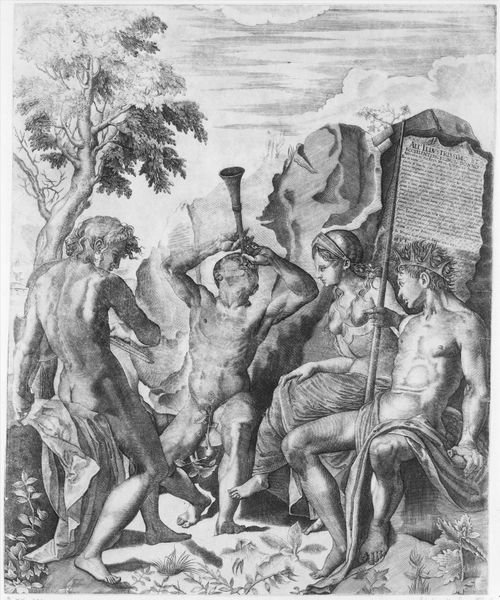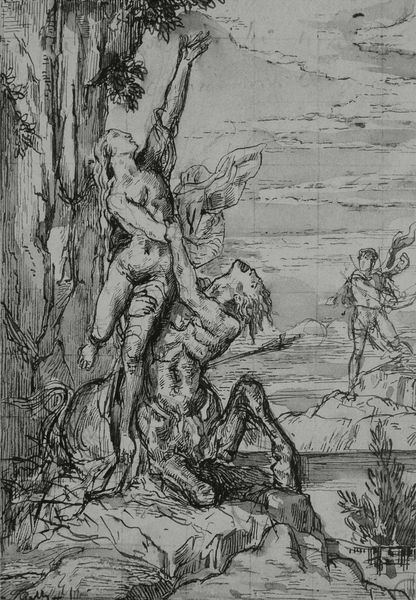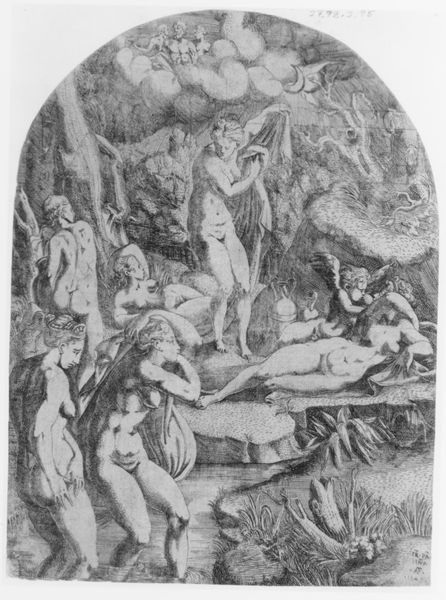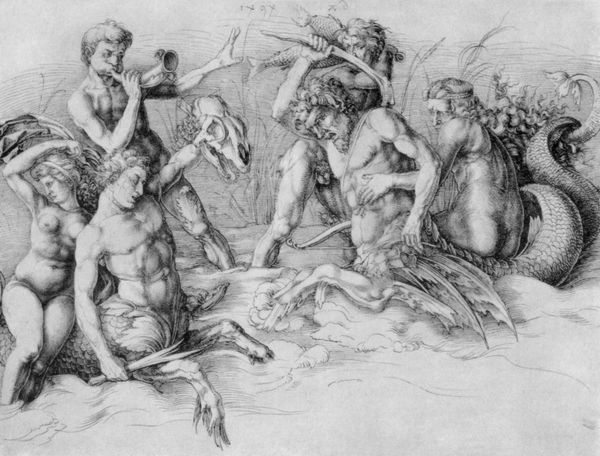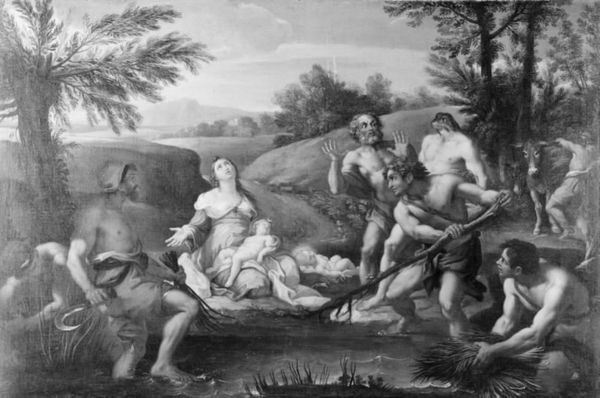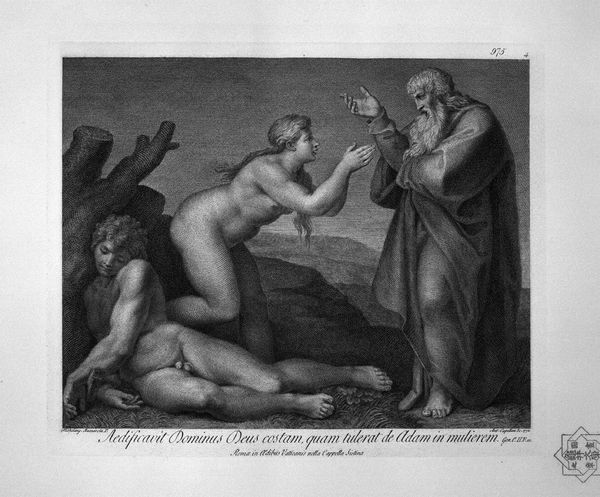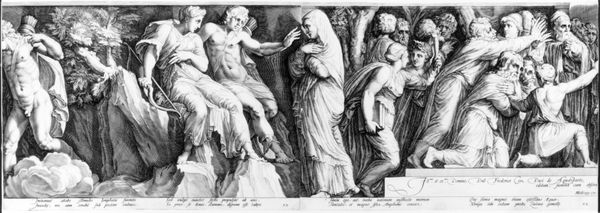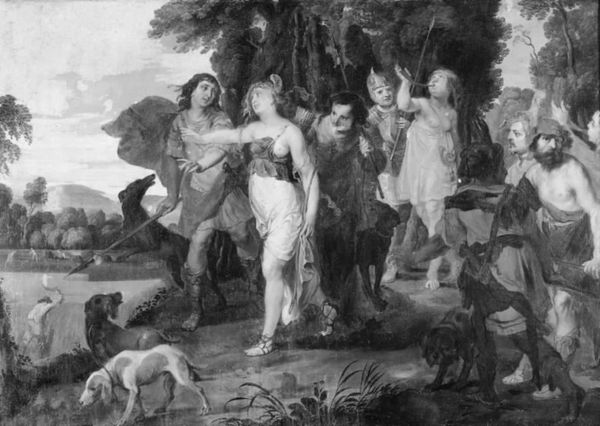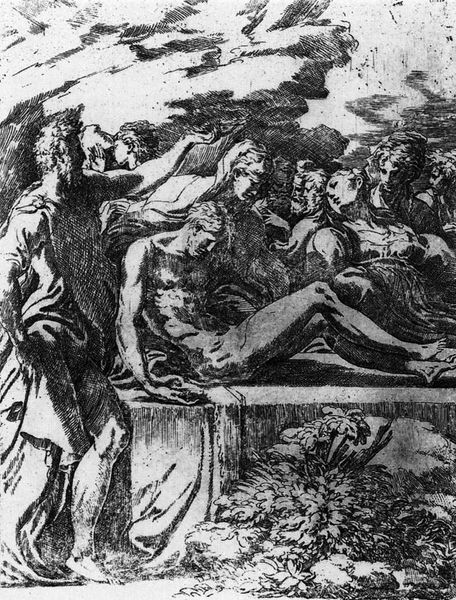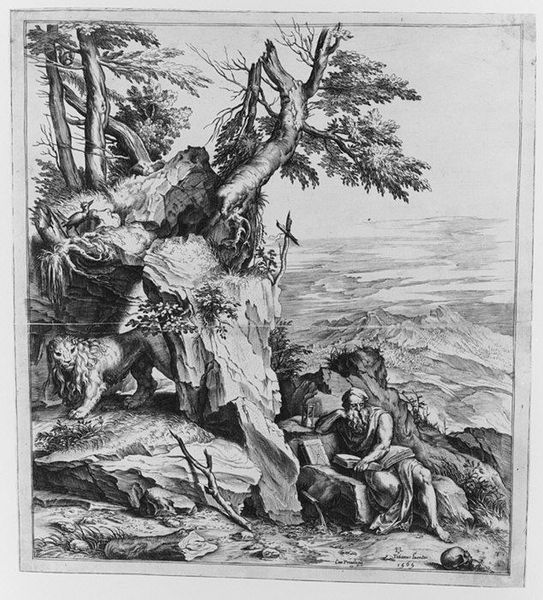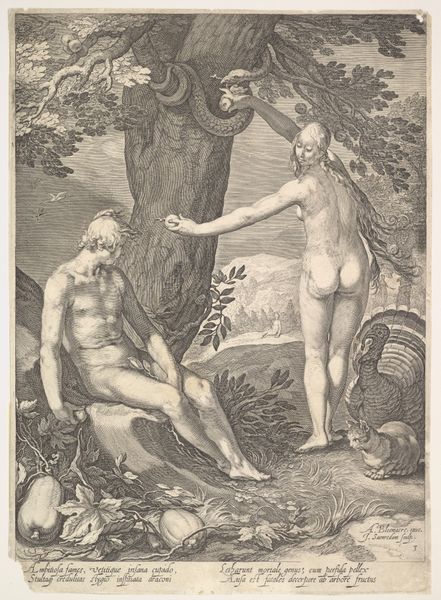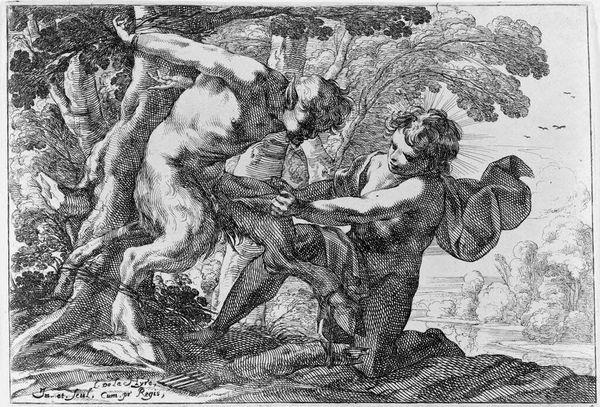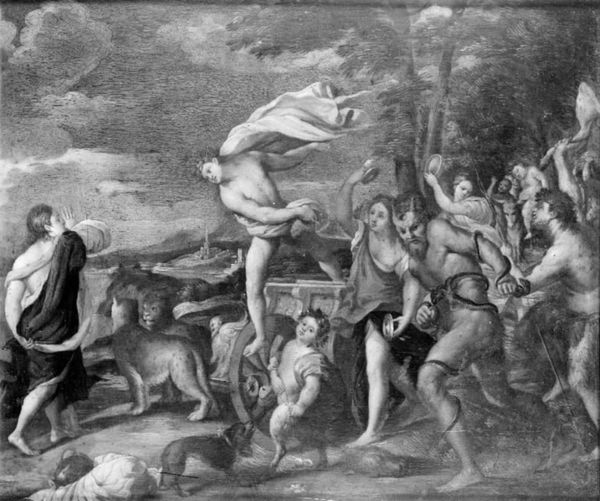
drawing, tempera, charcoal
#
drawing
#
tempera
#
landscape
#
charcoal drawing
#
mannerism
#
figuration
#
charcoal
#
history-painting
#
charcoal
Dimensions: 425 mm (height) x 274 mm (width) (bladmaal)
Curator: Here we have an early study for "The Baptism of Christ." It's believed to have been rendered between 1567 and 1613, but the maker remains anonymous. You'll notice that charcoal and tempera make up the medium of this arresting drawing. Editor: Arresting is right! It feels raw, like a scene caught in a moment of profound vulnerability and the start of something bigger, perhaps of hope. The figures are powerful but not idealized. Curator: Indeed. Baptism holds significant symbolic weight across numerous spiritual traditions. Water is the primary agent of purification, washing away sins, allowing for renewal, both individually and collectively. Notice, above Christ’s head, the Holy Spirit in the form of a dove. It is a symbol associated with peace. And the chorus of angels implies something transformative, divinely inspired. Editor: And John, performing the rite, is such an important symbolic character. Baptism and his ministry highlight the act of confessing sins in preparation for radical social change, like freeing marginalized communities from oppression and inequality, offering them redemption. His act challenges systems of power, doesn't it? Curator: Undoubtedly. But there’s more than just overt religious iconography present here. Look closely at the arrangement of figures. How does their positioning affect the viewer? How does the artist use the symbolic nature of chiaroscuro to lead the eye? Editor: I see the strategic placement alright. I find myself thinking of those kneeling onlookers in the foreground. Their averted gazes force me to ask questions. Whose perspectives are centered in sacred narratives? The painting evokes this sense that faith-based movements have often failed to dismantle oppressive social hierarchies, as they have struggled with their own crises. Curator: Perhaps. Yet one could also see their stances as reflecting reverence, contemplation of the enormity of the occasion. I lean towards emphasizing the symbolism inherent in these classical subjects. Editor: That’s the beautiful tension when we engage with historical works, isn’t it? What these images may reveal about collective histories and the diverse narratives of the people reflected in them, is also equally influenced by our modern-day perceptions. Curator: Absolutely. Each new observer offers a unique lens through which the work can be understood.
Comments
No comments
Be the first to comment and join the conversation on the ultimate creative platform.
